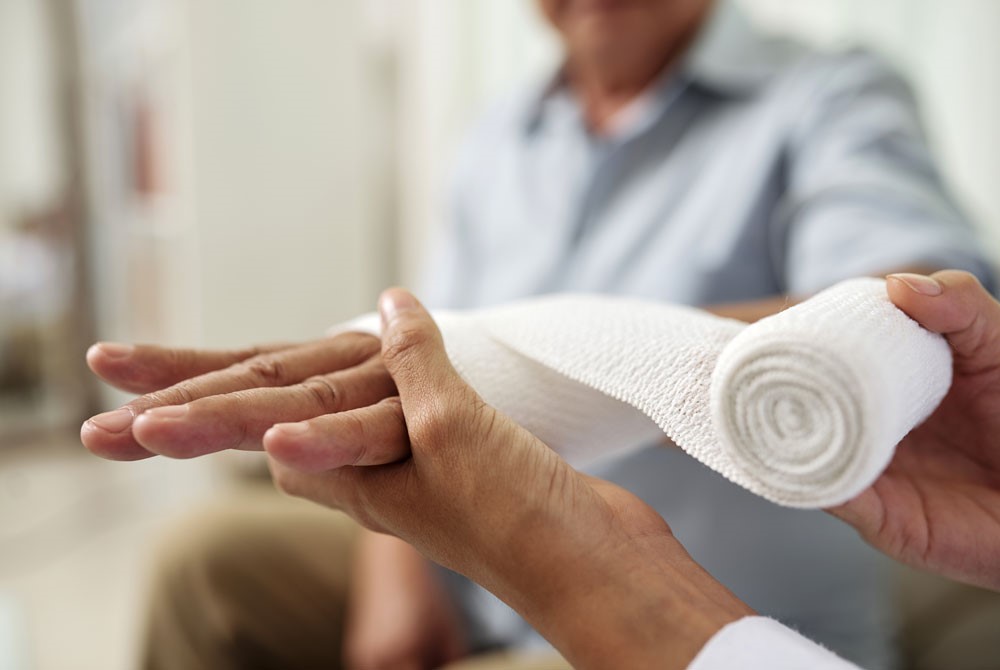
First aid in case of injury: how to apply a dressing
When you have a wound, you should always cover it with a dressing as this can help to prevent infection. Find out what to do
When applying a dressing always wear disposable gloves.
Some dressings have a wound dressing and bandage attached.
How to apply a dressing with a bandage attached
- Wash hands and put on disposable, non-latex gloves before touching a dressing or wound. We recommend using nitrile powder-free gloves for your first aid kit.
- Unfold the dressing pad and lay it directly on top of the wound, keeping it in place by holding the bandage on each side. Make sure the dressing covers beyond the edge of the wound.
- Wrap the short end of the bandage around the injured part to secure the dressing pad.
- Then wrap the longer end around the injured part, making sure all of the dressing pad is covered. Leave the short end hanging out.
- Secure the bandage by tying the short and long ends together in a reef knot, over the top of the pad to keep pressure on the wound.
- Then check their circulation. To do this press a nail or skin beyond the wound for five seconds until it goes pale. If the colour doesn’t come back within two seconds, the bandage is too tight so you’ll need to loosen it. Keep checking their circulation every 10 minutes.
- If blood comes through the dressing, remove it and reapply pressure with a new dressing or pad to control the bleeding. Once the bleed is under control, secure in place with the bandage, tying the knot over the wound to keep the pressure on.
Dressing a wound: How to apply a sterile pad or gauze
- Wash hands and put on disposable, non-latex gloves before touching a dressing or wound.
- Ensure the pad covers beyond the edge of the wound.
- Hold the pad by the edges and place it directly on top of the wound.
- Never touch the part of the pad that will be in contact with the wound.
- Secure the pad with adhesive tape or a roller bandage.
- Never wrap tape all the way around the injured part as this could reduce the blood flow. If you need to maintain pressure to control bleeding, use a roller bandage.
- If you have no pad or gauze available, you can use a clean, non-fluffy material such as a cloth.
Read Also:
Emergency Live Even More…Live: Download The New Free App Of Your Newspaper For IOS And Android
Wound Care Guideline (Part 1) – Dressing Overview
Wound Care Guideline (Part 2) – Dressing Abrasions And Lacerations
Wound Care Guideline (Part 3) – Pressure Wound Dressing
Wound Care Guideline (Part 4) – Leg Ulceration Dressing
Wound Care Guideline – Will The Wound Completely Heal
Treating Injuries: When Do I Need A Knee Brace?
Wrist Fracture: How To Recognise And Treat It
First Aid, Fractures (Broken Bones): Find Out What To Look For And What To Do


